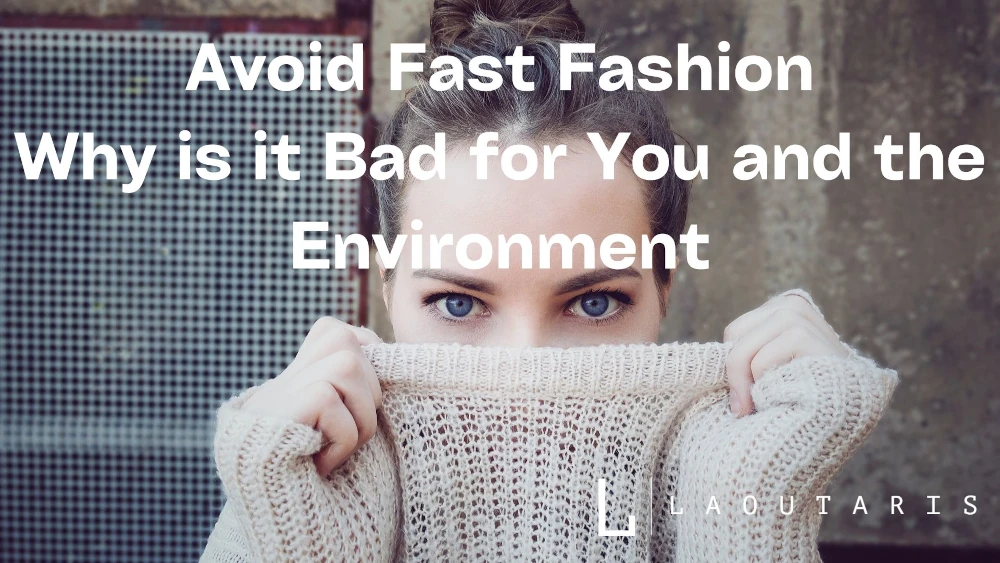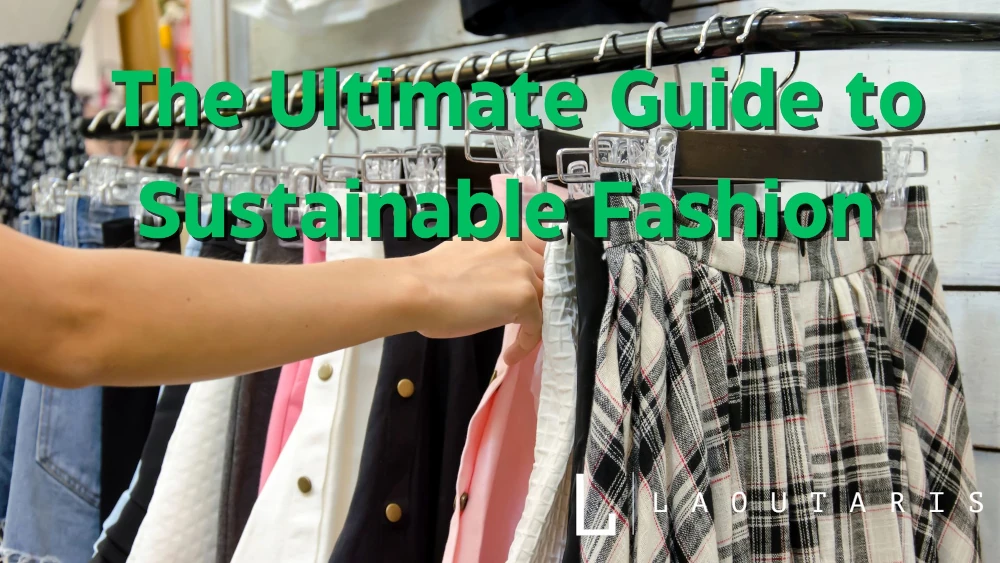Thin Fashion Models. There are concerns for the health and well-being of models who are pressured to maintain a certain weight and shape, which can lead to eating disorders and other health issues.
Table of Contents
The average reading time is 24 minutes. The article was last updated on 28/05/2024.
The issue of thin fashion models in the industry
When we think of models in the fashion industry, we often picture tall, skinny individuals gracing the runways and magazine covers. However, the issues of body diversity and representation are starting to come to the forefront. The lack of inclusivity in fashion has been a long-standing problem, with many individuals feeling unrepresented and excluded. Additionally, there are concerns about the health and well-being of models who are pressured to maintain a skinny physique. Let’s examine these issues in more detail and consider the potential impacts on the fashion industry and society.
According to a study by the National Eating Disorders Association, 40-60% of fashion industry workers have dealt with an eating disorder.
Problems with body diversity and representation
The lack of diversity and representation in body types is a significant problem in the fashion industry. This often leads to models of all sizes and shapes being excluded, resulting in a uniform or ‘ideal’ appearance dominated by thinness. This can cause significant emotional harm and serious physical health issues for models who meet these narrow beauty standards and broader society consumers who aspire to them. The industry’s lack of body diversity highlights systemic inequality, promotes harsh judgments on self-esteem and mental well-being, and perpetuates dangerous stereotypes.
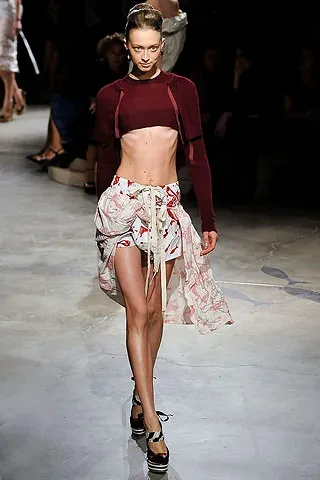
The fashion industry often prioritizes size over health when casting models or deciding what looks stylish, creating an unhealthy environment for both the designers and models involved. Body shaming marginalized groups is unacceptable, regardless of their size and shape. The issue has become so grave that several countries have implemented laws against underweight models. Fashion professionals must recognize the importance of inclusion while considering new ideas that promote healthy appearances and lifestyles.
Our society is embracing body positivity more than ever before. Yet, many brands still exclude plus-size models from runway shows despite evidence indicating they could generate an increase in revenue for these brands. It isn’t enough to tokenize one or two plus-size models if they don’t accurately represent larger markets or offer everyone-size-inclusive clothing options. Brands need to invest more effort into understanding their customers’ needs and promoting different concepts of beauty beyond just thinness with diverse casting.
To promote an inclusive atmosphere in the industry, some suggestions include reinforcing positive images that show variety during fashion week events, increasing the use of computer editing software capable of showcasing all figures, hiring people from diverse backgrounds so there are differing opinions about how a model should look; employing doctors on set to ensure models are healthy when they step onto the stage or offshoot/editing schedules should be made flexible depending on unique patient requirements like pre-existing medical conditions that preclude strict dietary measures. Only when we start acknowledging different body sizes and shapes as an integral part of our society can we truly begin to solve the problems with body diversity and representation in fashion.
“The only time models are allowed to have curves is when it’s scoliosis from carrying the weight of the fashion industry on their shoulders.”
Concerns for the health and well-being of models
The fashion industry has raised concerns regarding the health and well-being of models due to the prevalence of unhealthy body standards. Models are expected to maintain a thin appearance, often resulting in eating disorders, malnutrition, and mental health issues. The pressure to fit into a specific size range can also lead to extreme dieting and exercise habits. This poses significant risks to their well-being, including increased susceptibility to illnesses and injuries. The industry needs to address these concerns and prioritize the health of its models.

Many models have shared their experiences with eating disorders, revealing that it is an ongoing problem that needs acknowledgment and support. These stories emphasize the negative impact of unrealistic beauty standards on people’s physical and mental health.
While some progress has been made in promoting body diversity, there is still a long way to go. The use of plus-size models in shows is commendable; however, this is still a small percentage of models used overall. More diverse representation is essential for the models’ health and the consumers’ mental well-being who identify with them.
One model shared her experience working on a set where she was forced to wear a corset so tight she became dizzy, vomited, and blacked out from lack of oxygen – all while needing to perform during shoots after 14-hour days with minimum breaks. This story illustrates the importance of prioritizing models’ safety over achieving desired aesthetics.
Fashion is finally embracing body positivity, and it’s about time- diverse models are making waves and sending messages of acceptance.
The current state of body positivity and inclusivity in fashion
As a fashion enthusiast, it’s hard to ignore the prominent role that models’ size, shape, and color play in the industry. The current state of body positivity and inclusivity in fashion has been a hot topic of debate, with many questioning the industry’s commitment to representing diverse body types.
In this section, we’ll take a closer look at the progress made in size ranges and plus-size models in shows, as well as the encouraging example of Paloma Elsesser’s success. By exploring these sub-topics, we can better understand the strides that have been made and the work that still needs to be done in promoting a more inclusive fashion industry.
Size ranges and plus-size models in shows
The fashion industry has been criticized for lacking size ranges and inclusivity regarding plus-size models. Here are six key points to consider:
- Many brands have expanded their size ranges but aren’t showcasing them on the runway.
- The inclusion of body diversity is making its way into fashion shows but at a slow pace.
- The use of plus-size models is still not being normalized in the industry.
- Showing just one or two models who are considered “plus-size” doesn’t necessarily equate to inclusivity.
- Plus-size models must be given the same opportunities and recognition as their straight-sized counterparts.
- The use and proper representation of plus-size models can benefit the industry and society by promoting more positive body image ideals.
It’s important to note that the push for greater inclusivity in fashion doesn’t stop with plus-size models. The industry must also try to showcase other forms of diversity, such as race, age, and ability.
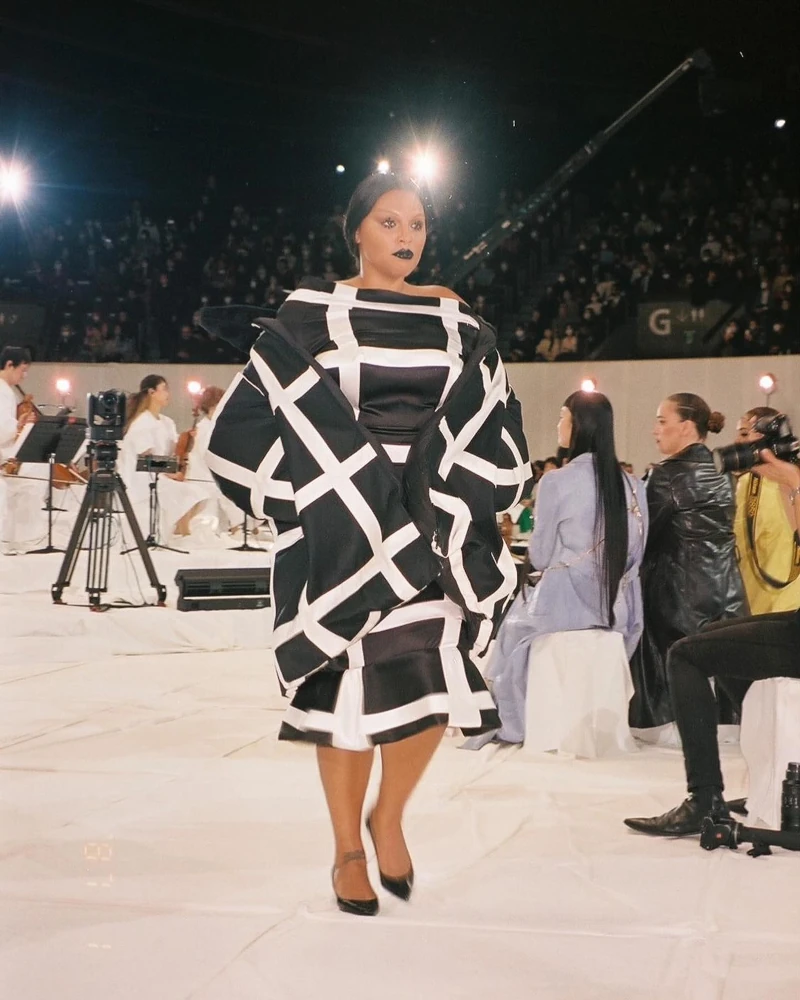
In recent years, changes have been made towards greater inclusivity, such as featuring diverse castings during fashion week, including different sizes, races, ages, and genders. However, there is still a long way to go before real progress is made.
One true history of this issue can be seen in 2018 when fashion brand Chromat hosted an all-inclusive runway show that featured trans women, people with disabilities, and women of all sizes. This groundbreaking event proved that the industry can embrace diversity without sacrificing style or creativity.
Paloma Elsesser proves that beauty comes in all shapes and sizes, and the fashion industry better takes note.
Example of Paloma Elsesser’s success
Paloma Elsesser’s rise to fame is a prime example of the fashion industry’s progress toward body inclusivity. As a plus-size model and activist, Paloma has opened doors for underrepresented communities in the modeling sphere. She has worked with major brands such as Nike, Fenty Beauty, and Glossier, breaking down barriers and paving the way for future models outside the typical size range. Her success challenges the outdated standards normalized by mainstream media and gives hope to those who wish to see more diversity on runways worldwide.
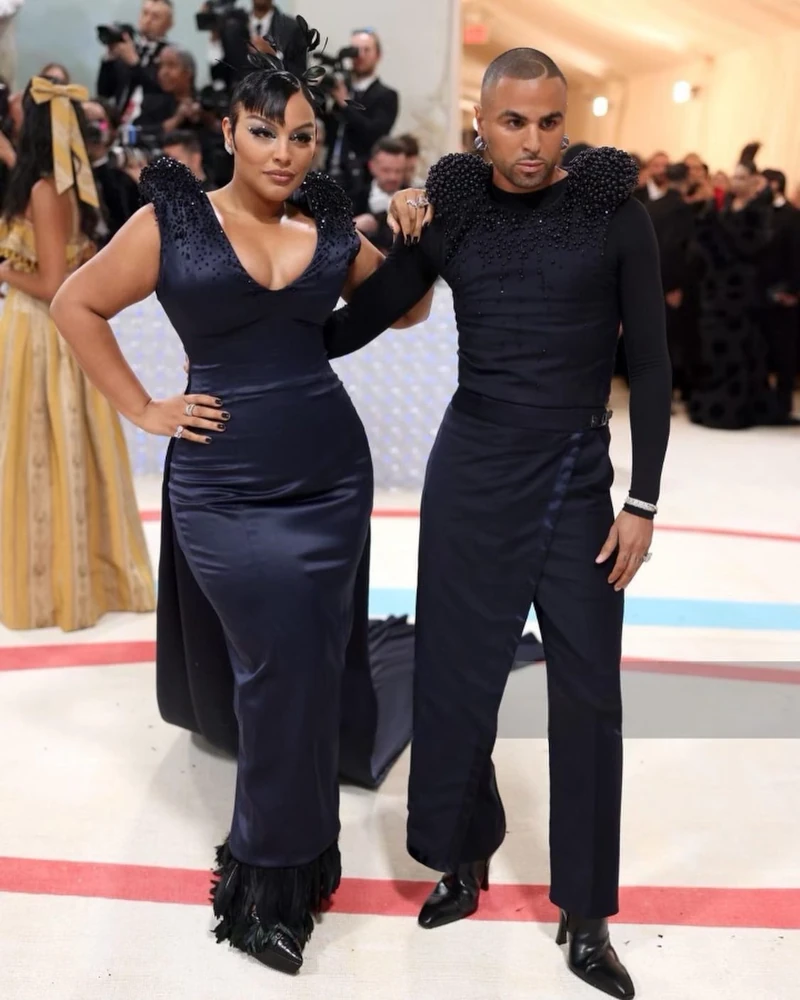
Moreover, Paloma Elsesser’s success is attributed to her modeling career alone and her advocacy work. She openly speaks about body image issues and encourages others to embrace their bodies through social media platforms such as Instagram. This inclusion and positive representation elevates the modeling landscape beyond aesthetics, focusing instead on individual expressionism and acceptance.
It is worth mentioning that despite Paloma’s success story, there is still a lack of diversity in primary runway shows worldwide. Only recently did it take Baby Phat’s 2019 comeback show to feature all-black plus-size models considered groundbreaking despite much more being needed towards accurate representation within fashion weeks globally.
According to Harper’s Bazaar, “NYFW Fall/Winter 2021 saw very little progress”, suggesting that although small steps were made in past years, continuous efforts are required from current vital players such as casting directors, modeling agencies, fashion designers themselves if we are ever to achieve equal visibility for all types of beauty standards in this sector.
The London Fashion Week runway revealed a shocking skinny Minnie reality in a city known for cool Britannia.
Observations from the 2023 London Fashion Week
As I walked through the 2023 London Fashion Week, I couldn’t help but notice the concerning trend of shockingly thin models on the runway. It’s alarming that the fashion industry still promotes unhealthy body standards despite numerous campaigns and efforts to combat them. However, there is some hope, as I overheard industry insiders and tastemakers discussing and acknowledging the issue.

In this section, I’ll share my observations on the thinness of models and how experienced individuals in the fashion industry are taking steps to address this long-standing problem.
Shocking thinness of models
Models at the 2023 London Fashion Week were observed to have shocking thinness, highlighting the issue of body diversity and representation in the industry. This concern has also been attributed to the potential negative impacts on the health and well-being of models, as shared through horror stories by industry professionals. Despite experienced tastemakers acknowledging this problem, there is still a lack of diversity on the runway, indicating regression in inclusivity rather than progression observed in prior years.
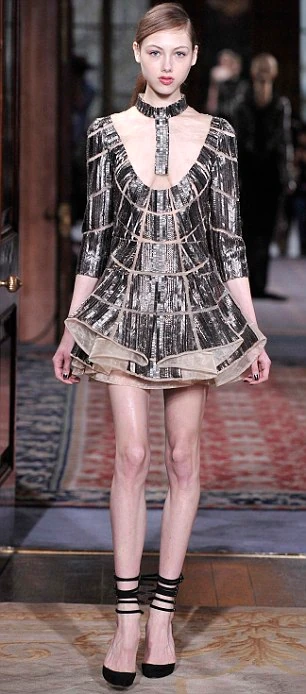
The role of fashion brands and professionals is crucial in making a change toward body positivity and inclusivity, as people’s self-esteem can be affected by triggering effects caused by normalized thinness. As highlighted by this issue, it is essential to prioritize diversity and representation in fashion despite the complexity of solving this multifaceted problem.
Looks like the fashion industry finally realized that bones are not the new black.
Experienced industry tastemakers are acknowledging the problem.
Industry professionals with years of experience are becoming increasingly aware of the negative impact of thin models in the fashion world. Many recognize that this issue leads to a lack of diversity and inclusivity and can have severe implications for models’ health and well-being. Despite this, the fashion industry has slowly changed its ways, highlighting the complexity of solving the problem. However, experienced tastemakers acknowledging and discussing these issues are necessary to create a more inclusive and healthy industry.
Being a fashion model is the only profession where losing weight is considered a promotion.
Normalization of thinness in the fashion industry
As someone who has always been interested in fashion, I find the normalization of thinness in the industry a concerning trend. It’s not just a matter of aesthetics – real horror stories are shared by models who feel pressured to maintain dangerously low weights. Unfortunately, the difficulty in discussing this issue due to potential criticism means that it often goes unaddressed. However, it’s essential to bring awareness to this problem and create a safer and more inclusive environment for models.
Horror stories shared by models
The fashion industry has long been criticized for promoting unrealistic body standards, causing “horror stories shared by models.” Many models have spoken out about the pressure to maintain dangerously low weights through extreme dieting and exercise, leading to physical and mental health problems. Some have even recounted instances of being pressured by agencies or designers to lose more weight or face losing their jobs. These stories shed light on the industry’s dark side and its negative impact on individual models.
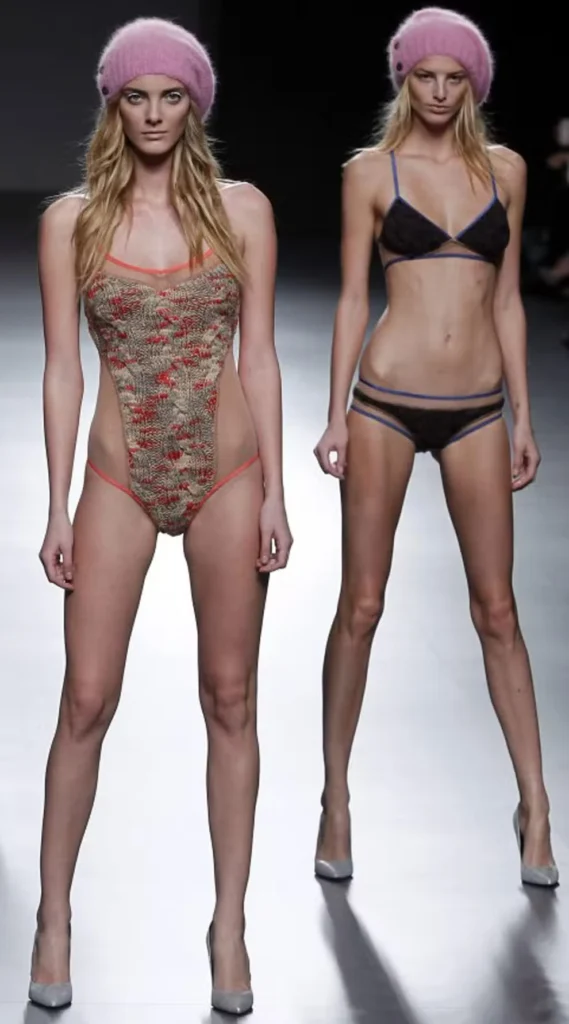
To combat these challenges, some brands are embracing more inclusive representation. Plus-size models increasingly appear in fashion shows, and body diversity is celebrated more widely. However, there is still a long way to go before all models feel accepted and valued based on their unique looks and personal strengths.
Professionals in the industry need to prioritize model well-being over outdated beauty standards. This can be done by instituting regular health checks for all models, providing ample food options backstage at shows, and creating a support network for those struggling with mental health issues.
By continuing to raise awareness of these issues and taking action toward inclusive representation, we can create a healthier fashion industry for everyone involved. It is time for a change in an industry with so much power over societal beauty ideals.
Talking about thin models in the fashion industry is like walking on eggshells; it’s a delicate topic that can quickly crack under the pressure of criticism.
Difficulty in discussing the issue due to potential criticism
Addressing the issue surrounding the normalization of thinness in the fashion industry presents a significant challenge due to potential criticism, hindering meaningful discussions. The reluctance stems from the fear of being deemed unprofessional and receiving backlash for deviating from established beauty standards. Moreover, designers generally hesitate to address it, fearing alienating consumers accustomed to seeing only skinny models on their runways. This creates an environment where critical stakeholders within the industry hesitate to speak up and tackle issues such as the underrepresentation of diverse body types or the impact that such depictions have on people’s self-esteem.
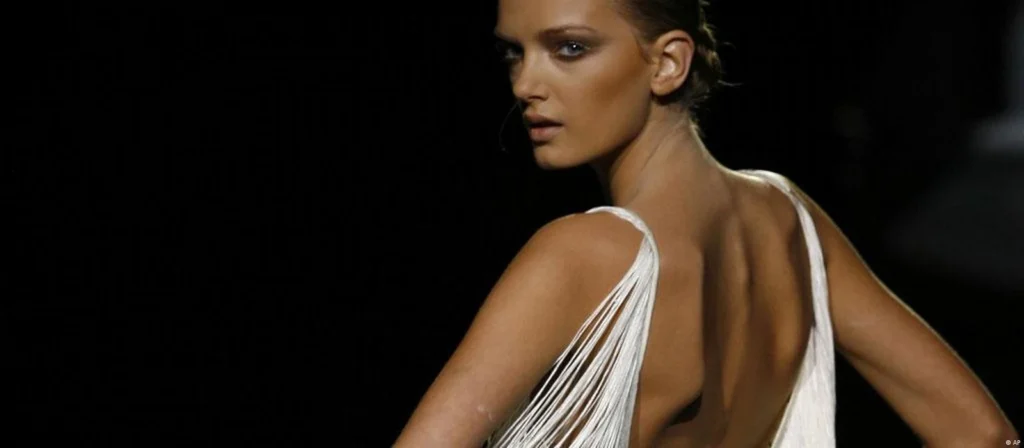
While this has been a long-standing problem within the industry, recent evaluations by experienced tastemakers during London Fashion Week in 2023 have brought this issue back into public discourse. The prevalence of extreme thinness among models was evident, which many consider indicative that little progress has been made despite years of effort toward diversification. Paloma Elsesser’s success as a plus-size model is one example where steps are taken toward inclusivity.
It is essential to point out that shedding light on this issue should not turn into discrimination against slender models or delegitimize body diversity representation altogether. Instead, It should encourage constructive conversations in an open forum with all relevant stakeholders, providing realistic solutions that promote healthy body image while fostering diversity and inclusion in fashion.
Pro Tip: Encouraging diversity starts with an intentional push to ensure every perspective is heard when discussing changes in body image standards – from models and agencies alike who hold sway over influential publications and brands.
The runway may have become more diverse in terms of race and ethnicity, but the lack of size diversity shows that fashion’s progress is still hanging by a very thin thread.
Lack of diversity on the runway and regression in inclusivity
Regarding fashion, there has always been a certain standard for what is considered “ideal.” Unfortunately, this has translated into a lack of diversity on the runway, with many models failing to meet the industry’s skinny size requirements. While there have been some strides toward inclusivity, there is still a long way to go.

Looking back, small steps have been made towards more diversity, but progress has regressed in recent years. Despite the outcry from consumers and advocates, many designers still refuse to include models outside the sample size bracket on their runways.
A retrospective view of the progression made in fashion
Looking back at the past years, the fashion industry has tried to promote diversity and inclusivity. However, a retrospective view of the progression made in fashion indicates that the industry is still struggling with issues of representation and body diversity. Despite plus-size models and expanded size ranges, inclusion and representation of more diverse body types on the runway have yet to be fully achieved.
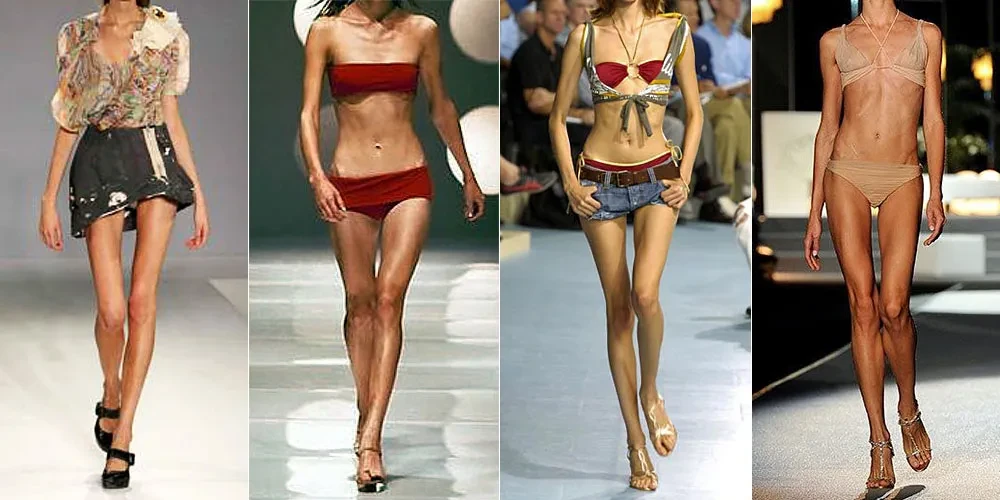
In addition, thinness remains normalized in the industry, with models feeling immense pressure to maintain unrealistic standards and risking their health. Fashion brands and professionals need to recognize their role in promoting more diverse representations of bodies that cater to all demographics.
A pro tip would be for individuals to support brands that are transparent about their production process, including whether they hire models of diverse sizes and backgrounds. By taking small steps like this, we can push towards a more inclusive future for fashion.
The fashion industry needs to stop treating body diversity as a trend and start embracing it as the norm.
Waiting for the inclusion of models outside the sample size bracket
The fashion industry has made progress towards inclusivity, but there is still a pressing issue of waiting for the inclusion of models outside the sample size bracket. Despite some brands and designers introducing plus-size models to their shows, most industries remain committed to using ultra-thin models. This alienates consumers who don’t fit these strict beauty standards, which further enforces body dysmorphia and low self-esteem.
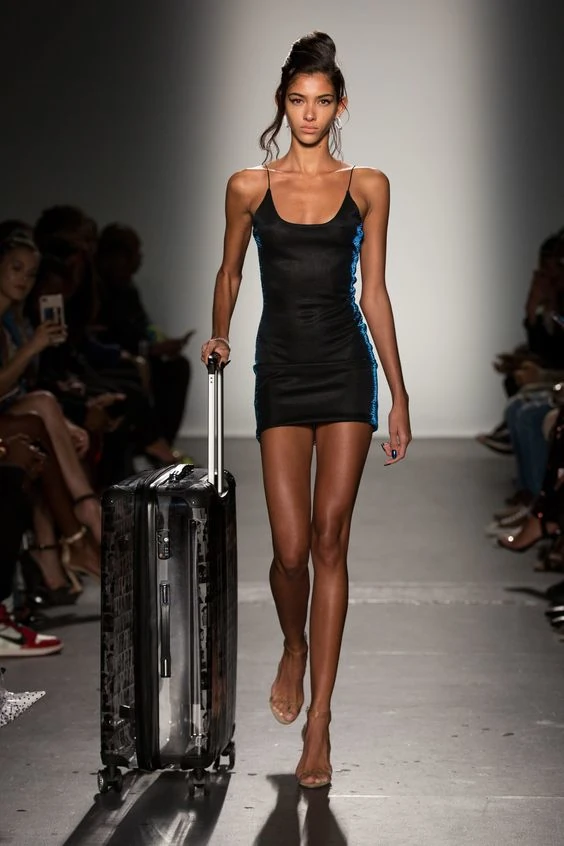
Many traditional campaigns feature only thin fashion models with unattainable beauty standards, with sizes rarely exceeding 0 or 2. This lack of representation harms people who don’t fit this size bracket. The attention given to body positivity becomes null when brands and designers continue opting for unrealistic beauty standards over accurate representation.
Historically, inadequate representation during fashion week proceedings has continued in an “us versus them” mentality where larger frames are disproportionately represented as undesirable. Therefore, revolutionizing beauty ideals within fashion will require changing cultural norms while also looking at how the industry contributes to stereotypes that other individuals’ appearances are undesirable.
Breaking away from the norm is difficult, but breaking away from the norm of normalized thinness in fashion is a whole new level of complicated.
The complicated process of solving the issue
As I delved deeper into the issue of fashion and skinny models, I realized that solving this multifaceted problem is not as simple as it seems. The industry consists of fashion brands and professionals with a crucial role in making a change. On the other hand, the negative impacts on people’s self-esteem and triggering effects cannot be overlooked. As per research by the National Eating Disorders Association, 70% of college-going women feel worse about their bodies after reading fashion magazines. These alarming statistics prove the importance of finding a solution to this issue.
The role of fashion brands and professionals in making a change
Fashion brands and professionals are vital in promoting body positivity and inclusivity. They have the power to change the norms set by the industry regarding body types and diversity. By representing models across all sizes, they can shift societal standards surrounding beauty and establish a more inclusive culture.
Fashion brands must implement changes within their organizations by incorporating models of varying sizes on their runways and advertisements. They can also partner with models who have struggled with eating disorders and provide them with opportunities to speak out about their experiences. This may help remove the stigma of mental health issues and promote self-acceptance.
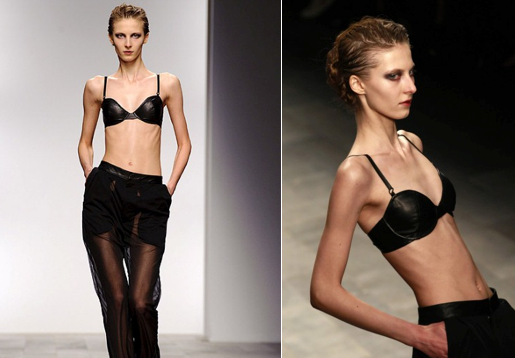
Moreover, professionals within the industry should encourage discussion among colleagues about the issue of thin fashion models, allowing for open dialogue while avoiding potential criticism. This can involve offering resources and training for individuals struggling with body image issues.
It is essential to recognize that change cannot happen overnight. However, brands can eventually normalize a healthier attitude towards beauty by consistently promoting positive messaging around body image through hiring diverse models and creating campaigns that celebrate a broader range of beauty standards.
Pro Tip: The industry must continue to challenge its long-standing norm of thin fashion models as not only does it reflect a narrow ideal of beauty, but it also has negative impacts on people’s self-esteem and well-being. Thin models may be trendy in the fashion industry, but they are damaging to self-esteem and trigger negative body image issues.
Negative impacts on people’s self-esteem and triggering effects
The adverse effects of the fashion industry’s glorifying thinness on people’s self-esteem and triggering impacts on body image disorders are significant. Unhealthily thin models have unrealistic body standards, which leaves many individuals feeling inadequate and insecure about their bodies. Moreover, constant exposure to media messages promoting excessive weight loss can be a trigger for those struggling with eating disorders or body dysmorphia.
Addiction to social media platform campaigns that consistently feature perfectly shaped skinny models influences women in a way that is not conducive to healthy mental and physical health. Consequently, this issue necessitates open conversations within the industry to protect the models’ well-being and the general public they influence.
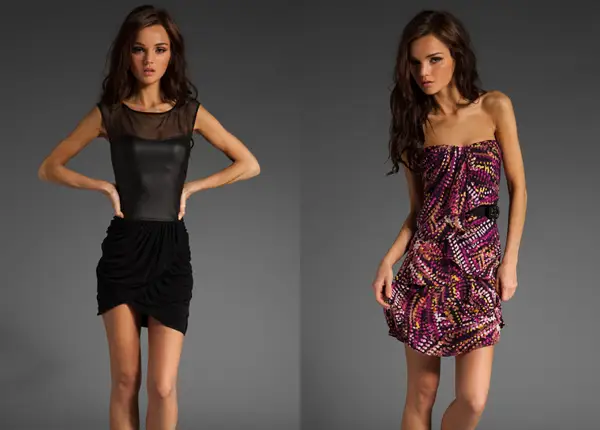
Despite visible concerns from previous events regarding thinned-out models at the London Fashion Week in 2023, significant changes haven’t been made yet. As witnessed by experienced fashion industry tastemakers and insiders, it’s challenging to initiate dialogue and change due to potential criticism.
Pro Tip: It’s necessary to foster a culture where diverse norms coexist through visibility established by brands, and professionals in marketing and advertising for the normalization of all body types.
Conclusion on the need for diversity and representation in fashion
The importance of diversity and representation in the fashion industry cannot be overemphasized. Style significantly influences the world, and everyone should be included. Including individuals of different races, body types, sizes, and ethnicities enhances creativity and enables fashion to provide a platform to showcase various cultures.
In recent years, the fashion industry has received criticism for using only skinny models. The use of thin models gives the impression that only slim individuals are attractive. This practice, therefore, promotes unrealistic beauty standards and negatively affects individuals’ self-esteem. Moreover, it does not represent most people’s body types, leading to a feeling of exclusion.
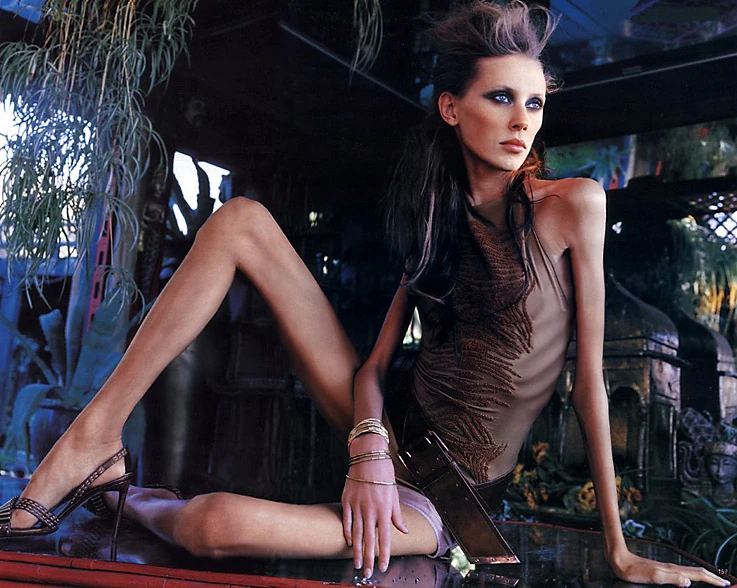
It would be beneficial if the fashion industry diversified the models they use. This would promote inclusivity and help to create a society where everyone feels appreciated and represented. It would also enable individuals to feel comfortable in their skin and boost their confidence.
Keeping the conversation on the need for diversity and representation in fashion is essential. Consciously supporting brands that promote these ideals would go a long way in ensuring a positive shift toward inclusion in the fashion industry. We should all advocate for a world where everyone feels represented, regardless of body type, size, or race.
Five Facts About Fashion and Skinny Models:
- ✅ The fashion industry has a problem with promoting skinny models on the runway despite widespread knowledge and awareness of the issue. (Source: Team Research)
- ✅ Models have reported mistreatment, being told to starve themselves before shows and to drop dress sizes to get cast in a show. (Source: Team Research)
- ✅ Fashion and industry tastemakers, such as Vanessa Friedman of *The New York Times*, have called attention to the issue of skinny models on the runway. (Source: Team Research)
- ✅ Despite increased talk and efforts toward body positivity, there are concerns that the industry is regressing and becoming less diverse regarding body shape on the runway. (Source: Team Research)
- ✅ Achieving more diversity and representation on the runway requires the industry to make fundamental changes and actively push for a more inclusive environment. (Source: Team Research)
Frequently Asked Questions
Is the fashion industry concerned about body diversity?
Despite the widespread awareness of the problem of body diversity in the industry, skinny fashion models are still the majority. There have been campaigns and petitions calling attention to it, but it remains a problem that needs to be addressed.
Are fashion models being told to smoke cigarettes instead of eating?
Yes, it’s a typical anecdote that models are being told to smoke cigarettes instead of eating in the run-up to shows to maintain a thin figure.
Why are some models asked not to drink water?
Models are sometimes asked not to drink water before shows to avoid bloat or retain water weight.
How does the lack of diversity affect the modeling industry and clothing consumers?
The lack of diversity on the runway and in the modeling industry excludes a vast population of potential consumers who don’t fit the sample size bracket. This pressing issue needs to be addressed, as it affects not only models but also consumers. It’s important to have models representing diverse body shapes, sizes, ages, and races.
Are curve models being represented on the runway?
There’s been a lot of talk about the lack of curve models on the runway, but little is being done to make the change. The absence of curve models reinforces the notion that thinness is the ideal body type, which harms individuals who don’t fit that mold.
Why is it difficult to speak about the issue of skinniness in the modeling industry?
The issue of skinniness in the modeling industry is complex to discuss because of the potential criticism it receives. People fear being accused of skinny-shaming and offending those who are naturally thin. However, it’s essential to differentiate between healthy and unhealthy body types, especially regarding models and their portrayal in the fashion industry.

Pashalis Laoutaris
Fashion Blogger
I am a professional writer, fashion blogger, and owner of the site https://laoutaris.com. As a salesperson for more than 20 years, I have experience of 10 years in the fashion industry. I consider myself a true fashionista. I am writing daily blog articles about fashion, tools and converters, and everything you need to know about the current fashion trends.
Share this article
Our Latest Articles
Laoutaris Recommends
